Choosing the Right Pallet Inverter for Greece's Demands in Safe Transfer of Unstable Loads in Coastal Factories
Are you managing a factory on the beautiful but challenging coast of Greece? You know the daily struggle. You have stacks of products, maybe bags of cement or boxes of fragile tiles, that are unstable and difficult to handle. Moving them is a constant risk. One wrong move could lead to damaged goods, costing you thousands. Worse, it could lead to a worker injury, which is a price no one wants to pay. This problem gets worse when you factor in the salty, humid air that relentlessly attacks your equipment, causing rust and breakdowns. You need a solution that not only secures your loads but also withstands the harsh coastal environment.
The right pallet inverter for Greece's coastal factories must have three key characteristics. First, it requires robust corrosion resistance, achieved through materials like 304/316 stainless steel or hot-dip galvanized coatings for the frame and critical components. Second, it must feature a highly adjustable clamping system that can apply firm but gentle pressure to secure unstable loads without causing damage. Third, the system needs a smooth, controlled 180-degree rotation mechanism, often managed by a hydraulic power unit with soft-start capabilities, to guarantee a safe and efficient transfer from one pallet to another.
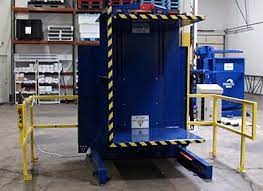
I've been in this industry for a long time, first as an engineer on the factory floor and now as the owner of SHJLPACK. I’ve seen firsthand what works and what doesn't. A pallet inverter isn't just a piece of steel; it's a critical part of your production line's safety and efficiency. Choosing the wrong one is a costly mistake. But choosing the right one can transform your operations. Let's break down exactly what you need to look for, so you can make an informed decision that protects your products, your people, and your profits.
Why are standard pallet inverters not enough for coastal environments in Greece?
You invested in a new pallet inverter. It seemed like a solid machine. For the first year, it worked perfectly, saving your team time and reducing product damage. But then, problems started. You noticed small spots of rust on the frame. Then, a sensor failed due to corrosion. The hydraulic fittings began to look weathered. Soon, the machine was experiencing frequent electrical faults, causing frustrating downtime. The standard machine you bought, which was designed for a dry, inland warehouse, is simply not built to survive the salty, humid air of a coastal Greek factory. The solution you thought you had has become a new source of problems and expenses.
Standard pallet inverters fail in coastal areas like Greece because their materials and components are not designed to withstand high humidity and corrosive salt air. This leads to rapid rust, electrical failures, and structural weakness. A machine made from standard painted carbon steel will quickly degrade, with corrosion compromising everything from the frame's integrity to the sensitive electronics that control it. You need a machine built specifically for this challenging environment.
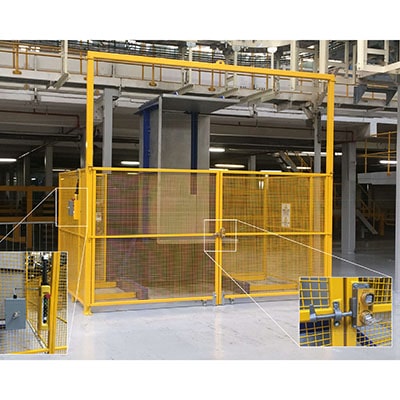
The Corrosive Attack of Salt and Humidity
The air in coastal regions is filled with moisture and salt ions. This combination is incredibly aggressive towards metal. It's not just about surface rust that looks bad. This process, called galvanic corrosion, chemically eats away at the metal, weakening the structure over time. I remember a client in a port city who bought a standard inverter. After two years, a main support beam had lost a significant amount of its structural integrity due to hidden corrosion. We had to perform an emergency replacement. The most vulnerable parts are often the ones you don't see every day. These include bearings, which can seize up when corroded. Hydraulic fittings are another weak point; corrosion can cause leaks, leading to pressure loss and potential system failure. And most critically, electrical cabinets. If they are not properly sealed, humid, salty air will get inside and corrode circuit boards, terminals, and wires, leading to unpredictable and dangerous electrical faults. A simple painted finish is no match for this constant attack.
Material Selection is Non-Negotiable
When you are selecting a pallet inverter for a coastal factory, the choice of material is the single most important decision you will make. It directly impacts the machine's lifespan, reliability, and long-term cost. Investing in the right material upfront saves you from immense repair costs and downtime later. Let's compare the common options.
| Material | Description | Lifespan in Coastal Area | Cost Factor |
|---|---|---|---|
| Standard Carbon Steel | Basic steel with a layer of paint. | 1-3 years before major issues. | Low |
| Hot-Dip Galvanized Steel | Steel dipped in molten zinc for a thick protective layer. | 5-10 years. Good protection. | Medium |
| 304 Stainless Steel | An alloy with chromium and nickel. Excellent corrosion resistance. | 15+ years. Industry standard for hygiene/corrosion. | High |
| 316 Stainless Steel | Higher nickel and added molybdenum content. Superior resistance to chlorides (salt). | 20+ years. The ultimate choice for marine environments. | Very High |
For most coastal applications in industries like building materials or general manufacturing, a hot-dip galvanized frame combined with stainless steel for smaller, critical components offers a great balance of cost and performance. For food, pharmaceutical, or extremely harsh environments, full 304 or even 316 stainless steel construction is the only reliable choice.
Protecting the Brains: Electrical and Hydraulic Systems
The physical frame is only part of the story. The electrical and hydraulic systems are the machine's brain and muscle. In a coastal setting, they need special protection. All electrical enclosures must have an IP (Ingress Protection) rating of at least IP65. This rating ensures they are completely sealed against dust and can withstand low-pressure water jets, which means humid air can't get inside. All external sensors, buttons, and wiring conduits should also meet this standard. For the hydraulic system, it's not just about the fluid. We specify stainless steel for tubing and fittings where possible. We also use sealed bearings to prevent moisture and salt from contaminating the grease and destroying the bearing from the inside out. Some applications may even benefit from specialized, corrosion-resistant hydraulic fluids that are less susceptible to contamination from water.
How can a pallet inverter secure dangerously unstable loads?
Picture this common scenario. Your team needs to switch a pallet of bagged, powdered goods. The stack is tall and wobbly. The current method involves manually unstacking and restacking the bags. It’s slow, back-breaking work. Every time they do it, you worry about a potential collapse. A collapsed stack means lost product, a huge mess to clean up, and a significant risk of injury to your employees. You know there has to be a better, safer way. An automated solution like a pallet inverter seems right, but you need to be certain it can handle your specific unstable load without making the problem worse.
A pallet inverter secures unstable loads by using adjustable hydraulic clamping platforms to gently but firmly hold the entire load from top to bottom. It essentially creates a secure "sandwich" with your product in the middle. It then smoothly rotates the entire package 180 degrees. This process allows for a quick and safe pallet exchange without ever disturbing the stack's formation or integrity. The key is in the control and precision of the clamping and rotation.
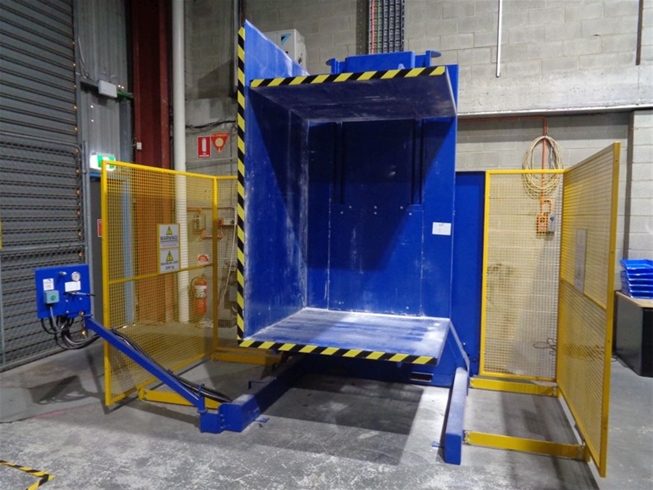
The Science of Clamping Pressure
The most common fear I hear from clients with fragile or unstable products is, "Will the machine crush my goods?" It's a valid concern. The solution is not brute force, but intelligent pressure. A good pallet inverter doesn't just have an on/off clamp. It has a highly adjustable hydraulic system with a pressure relief valve. This allows you to fine-tune the clamping force to the exact requirement of your load. For heavy, stable boxes, you might use a higher pressure. For light, unstable bags, you use a much lower pressure. Some advanced systems use PLC controls where you can save "recipes" for different products. An operator can simply select "Product A" from a touchscreen, and the machine automatically sets the correct clamping pressure. For extremely delicate or uneven loads, we can also equip the clamping platforms with soft-touch rubber linings or even articulating pads that conform to the shape of the load, ensuring pressure is distributed evenly and not concentrated on weak points.
Rotation Control: Speed and Stability
Once the load is clamped, the rotation phase is critical. A sudden, jerky rotation is the last thing you want for an unstable stack. This is where the quality of the hydraulic power unit and the control system comes into play. We design our systems with "soft-start" and "soft-stop" functionality. This means the rotation starts slowly, smoothly accelerates to its main speed, and then gently decelerates as it approaches the 180-degree point. This eliminates the shock and momentum shifts that could cause layers within the stack to slide. The entire rotation cycle should be smooth and predictable. This is achieved through proportional valves in the hydraulic circuit, which allow for precise control over the flow of fluid and, therefore, the speed of the rotation motor. The goal is to rotate the load as if it were a single, solid block.
Load Characteristics Matter
Not all unstable loads are the same. A pallet inverter must be specified correctly for the type of product you handle. The challenges presented by a stack of slippery bags are different from those of tall, narrow boxes. We always analyze the client's product first.
| Load Type | Primary Challenge | Essential Inverter Feature |
|---|---|---|
| Sacked Goods (e.g., cement, flour) | Tend to bulge, sag, and shift. The stack can lose its shape. | Adjustable Side Walls. These press in lightly from the sides to keep the stack square and contained during inversion. |
| Boxed Goods (tall & narrow) | High center of gravity. Prone to tipping. | Extended Top Clamp. A top clamp that can securely press down on the very top of the stack is crucial for stability. |
| Pails / Drums / Tubs | Can be slippery plastic. Round shapes don't interlock well. | High-Friction Clamp Surfaces. Special rubber or textured surfaces on the clamping platforms to prevent sliding. |
| Vitrified Tiles / Glass Sheets | Extremely fragile and heavy. Any shock can cause cracking. | Ultra-Slow Rotation Speed & Pressure Sensors. A system that rotates very slowly and uses sensors to ensure pressure is never exceeded. |
By matching the machine's features to your specific product, you can turn a dangerous manual task into a safe, automated, and efficient process.
What key features should you look for in a pallet inverter for maximum ROI?
You are a business owner. Every major equipment purchase has to be justified on the balance sheet. A pallet inverter is a significant investment, and while the safety benefits are clear, you also need it to deliver a strong Return on Investment (ROI). You need to see how it will reduce costs, improve throughput, and ultimately make your operation more profitable. How do you look past the initial price tag and identify the features that will truly pay for themselves and contribute to your bottom line?
To maximize ROI, you should look for a pallet inverter with specific features that target efficiency, longevity, and automation. Key examples include high-efficiency hydraulic power packs and motors with Variable Frequency Drives (VFDs) to reduce energy consumption. You also need modern PLC controls with a user-friendly HMI touchscreen for easy operation and integration. Finally, insist on durable, low-maintenance components, especially stainless steel or galvanized construction in a coastal environment, to minimize costly downtime and repair bills.
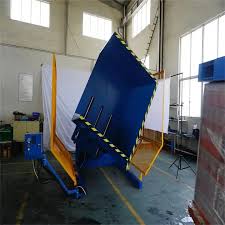
Beyond the Purchase Price: Total Cost of Ownership (TCO)
As an engineer who has built and run a factory, I learned early on that the cheapest machine is rarely the least expensive. You have to think in terms of Total Cost of Ownership (TCO). TCO is a simple but powerful formula: TCO = Initial Purchase Price + Lifetime Energy Costs + Lifetime Maintenance Costs + Cost of Downtime. A low-cost machine might save you money on day one, but if it uses more electricity, requires constant repairs, and breaks down frequently, its TCO will be much higher than a better-quality, more expensive machine. I once consulted for a company that bought a cheap pallet inverter. They saved about 20% on the initial price. But in the first three years, they spent 40% of the purchase price on repairs and lost over 100 hours of production due to breakdowns. A higher-quality machine would have paid for itself in avoided costs alone.
Efficiency Features That Pay You Back
Modern pallet inverters can be equipped with technology that directly reduces your operating costs. These features might add to the initial price, but their payback period is often surprisingly short. They turn an operational cost center into an efficient part of your process.
| Feature | Impact on Operations | How It Drives ROI |
|---|---|---|
| Variable Frequency Drive (VFD) | Controls motor speed, enabling soft start/stop. | Lowers Energy Bills: The motor only draws the power it needs, especially during acceleration. Reduces Wear: Less mechanical stress on gears, bearings, and the motor itself extends component life. |
| PLC with HMI Touchscreen | Provides an intuitive interface for operation, diagnostics, and storing settings. | Reduces Training Time: New operators can learn the machine quickly. Faster Changeovers: Saved recipes for different products mean one-touch setup. Fewer Errors: Reduces the chance of an operator using the wrong pressure or setting. |
| Automated Loading/Unloading | Allows the inverter to be fed by conveyors instead of a forklift. | Increases Throughput: Creates a continuous, automated flow. Reduces Labor Costs: Frees up forklift operators for other tasks. |
| Remote Diagnostics Module | Allows our engineers to securely log into your machine's PLC from our office. | Drastically Reduces Downtime: We can often diagnose a problem in minutes instead of days. Lowers Service Costs: Avoids the cost of flying an engineer to your site for simple software or sensor issues. |
Maintenance and Durability
Every hour your machine is down for maintenance is an hour it's not making you money. Durability isn't a luxury; it's a core ROI feature. This means looking for robust frame construction with thick steel and strong welds. It means asking about the quality of the components. Are they using oversized bearings that can handle more stress? Are the hydraulic hoses rated for high pressure and protected from abrasion? Another critical aspect is ease of maintenance. A well-designed machine provides easy access to all service points, like grease nipples, hydraulic fluid filters, and electrical panels. This makes routine preventative maintenance faster and easier, ensuring it actually gets done. This simple design consideration can add years to the machine's life and significantly reduce your long-term maintenance costs.
How do you integrate a pallet inverter into an existing production line for seamless operation?
You have a pallet inverter. It sits in a corner of your warehouse. When a pallet needs to be changed, a forklift driver has to stop what they're doing, drive the pallet over to the inverter, operate the machine manually, and then transport the new pallet to its next destination. This process creates a bottleneck. It adds extra steps, requires dedicated labor, and disrupts the flow of your production line. This isn't the streamlined efficiency you were hoping for. The machine works, but it exists as an island. To unlock its true potential, you must integrate it fully into your workflow.
Integrating a pallet inverter seamlessly involves three steps. First, you must carefully map your current material flow to identify the most logical point for the inversion process. Second, you must choose a machine model with compatible loading options for your needs, such as a ground-level, forklift-loaded model or a raised, conveyor-fed model. Third, you must utilize the machine's PLC controls to allow it to "talk" to upstream and downstream equipment, like palletizers, wrappers, and conveyor systems, creating a truly automated and hands-off process.
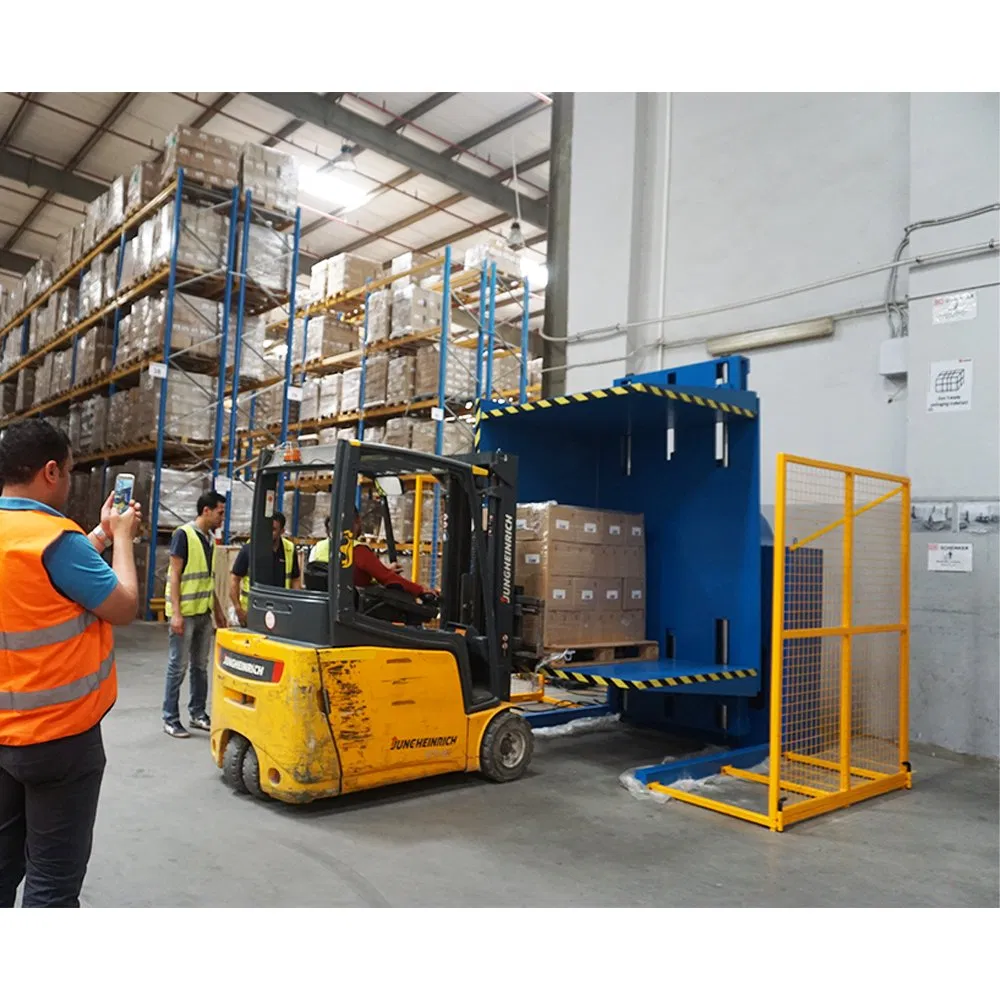
Mapping Your Workflow: Before You Buy
Before you even request a quote, you need to analyze your production line. Grab a notepad and walk the floor. Ask yourself: at what point does the pallet need to be changed? Is it in the receiving area, where you need to switch incoming goods from low-quality shipping pallets to high-quality in-house or plastic pallets? Or is it in the shipping area, where you need to transfer finished goods onto export-compliant or customer-specific pallets? Perhaps it's somewhere in the middle of the production process. The location determines the type of machine you need. For example, an inverter at the beginning of a line often needs to be floor-level and forklift-loaded. An inverter at the end of an automated packing line should be raised to conveyor height and fully integrated. Don't let the machine dictate your process; let your process dictate the machine you choose.
Integration Options: Standalone vs. In-Line
Based on your workflow map, you can decide between two main integration approaches. Each has its place, and the right choice depends on your volume, budget, and flexibility needs. As a partner, we help clients make this choice all the time.
| Integration Type | Best For | Pros | Cons |
|---|---|---|---|
| Standalone (Forklift Loaded) | Lower volume operations; factories where pallets need to be inverted at multiple, unpredictable points. | Flexible placement, can be moved if needed. Lower initial investment and installation cost. | Labor-intensive, requiring a dedicated forklift and operator. Can become a bottleneck at higher speeds. Increases forklift traffic in the area. |
| In-Line (Conveyor Integrated) | High-volume, predictable production lines with a consistent workflow. | Fully automated, "hands-off" operation. High throughput matches line speed. Reduces labor costs and improves safety by removing forklifts. | Higher initial investment. Requires more space and a fixed location. Less flexible if your production line changes. |
For a company like Javier's steel mill, with a goal of pushing digital transformation and high capacity utilization, an in-line solution is almost always the strategic choice for key production outputs.
The Communication Protocol: Making Machines Talk
True integration happens at the control level. This is where the pallet inverter's PLC (Programmable Logic Controller) becomes essential. The PLC is the machine's brain. For an in-line system, this brain must communicate with the rest of the line. For instance, a sensor on the in-feed conveyor tells the inverter a pallet has arrived. The inverter then signals the conveyor to stop, performs its rotation cycle, and once complete, signals the out-feed conveyor to start again, taking the new pallet away. This "handshake" protocol is vital. This can also be integrated with a higher-level Manufacturing Execution System (MES). The MES can track how many pallets have been inverted, monitor cycle times, and flag any errors for maintenance. Safety is also a key part of this communication. Safety light curtains, pressure mats, and physical guarding must be wired into the control system. If a person enters the operating area, the entire system—the inverter and its surrounding conveyors—must stop immediately. This level of integration turns the machine from a standalone tool into an intelligent, responsive part of a larger system.
Conclusion
The right pallet inverter is more than a machine. It is a strategic asset for safety, efficiency, and long-term growth, especially in demanding coastal environments. Choose your partner and your machine wisely.



